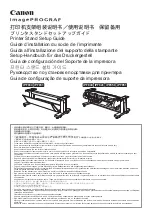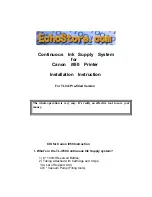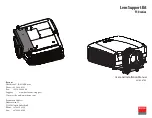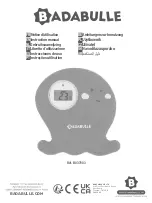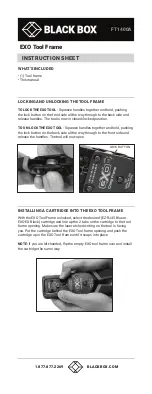
Section 2: Operating Instructions
AP-CC30 Concrete Claw 328-160MK
11/11/19
13
4. Lower loader arms as needed and tilt top of loader
hitch backward or forward as needed while driving
forward to force the claw into the ground below the
concrete slab.
5. Stop once the claw is positioned under the slab and
raise loader arms to break a section of the concrete
free. The top of the loader hitch plate may be tilted
forward or backward while raising the loader arms to
assist breaking out a section of the concrete.
6. Once the slab is loose and broken into a manageable
size for handling, align the Concrete Claw centered
on the slab, slide the claw teeth under the slab until
one end of the slab is positioned in the claw’s rear
opening to pin the slab under the top plate.
7.
Raise loader arms and tilt top of loader hitch plate
backward or forward until the claw and slab is about
one to two feet off the ground.
8. If the concrete slab is not centered in the claw or
could shift, repeat steps 6-7 above until the slab is
centered and stable.
9. If the slab is broken into smaller pieces, scoop up the
pieces with the claw, and raise claw off the ground
about one to two feet with the bottom slightly higher
at the front than at the back.
Transport Concrete Slabs/Pieces
The concrete may be carried to a preselected dump site
with the Concrete Claw. Usually the dump site is close-by
to eliminate travel time.
1. Survey the route you plan to take while transporting
the load to the collection site. Look for uneven terrain
and obstacles such as, ditches, terraces, boulders,
stumps, etc. that the Concrete Claw or load can
come against. Mark any problem areas with a flag or
other means.
2. Remove obstacles when possible. Never lift the
Concrete Claw very high off the ground. Instead, plan
to go around high obstacles that cannot be moved
out of the way.
3. Do not carry a load if it exceeds the maximum
allowable weight or if it is so large that it can cause
the power machine to tip over. Instead, break
concrete slabs into smaller sections and then carry
them.
4. Make sure the Concrete Claw has a secure hold on
the concrete slab before traveling with it. If not,
release the slab and get a new grip on it before
transporting.
5. If attachment is to be operated in reverse, make sure
visibility to the rear of the power unit is appropriate
for the attachment. Backup camera or mirror is
recommended. Maintain cleanliness of lens or
mirror.
6. When carrying a load in the attachment, position
attachment level at a safe, low height before moving
forward or backward.
7.
Make sure the power machine, attachment, and load
will clear all obstacles when backing-up or turning.
8. With engine set at an idle, begin traveling forward to
the collection site.
9. Continually scan all sides for pedestrians, animals,
traffic, and obstacles.
10. Keep attachment level when going up or down
inclines. Keep the load clear of solid objects. Never
ram the load or the Concrete Claw into the ground or
into other objects. Always be ready to stop in an
emergency.
11. Always drive at a safe speed and slow down when
going around corners. Avoid sudden braking.
12. Leave enough clearance when turning so that the
attachment and load does not contact obstacles
such as vehicles, buildings, trees, fences, etc.
13. Continue traveling forward while watching for uneven
terrain and obstacles. Slow down when traveling over
rough or hilly terrain.
Release Concrete Slabs/Pieces
1. Stop in front of desired location and slowly raise load
to the required height for releasing it.
2. Move slowly forward while checking to make sure the
attachment and load clears all obstacles.
3. Stop forward movement when load is positioned over
its release location.
4. Tilt end of attachment down while raising loader arms
up slowly until the load is resting on the ground.
5. Once the load has settled, slowly back up making
sure the attachment clears all objects and no
pedestrians or other traffic are behind or on either
side of the power machine.
6. As you back away, leave enough clearance when
turning so that it does not make contact with
obstacles such as vehicles, buildings, trees, fences,
etc.
7.
When clear of the site, stop, level and lower
attachment to the transporting height (low to the
ground) before moving again.
8. Transport back to the work site at a safe transport
speed. Reduce ground speed when turning and
leave enough clearance to keep the attachment from
making contact with obstacles such as buildings,
trees, fences, etc.



























